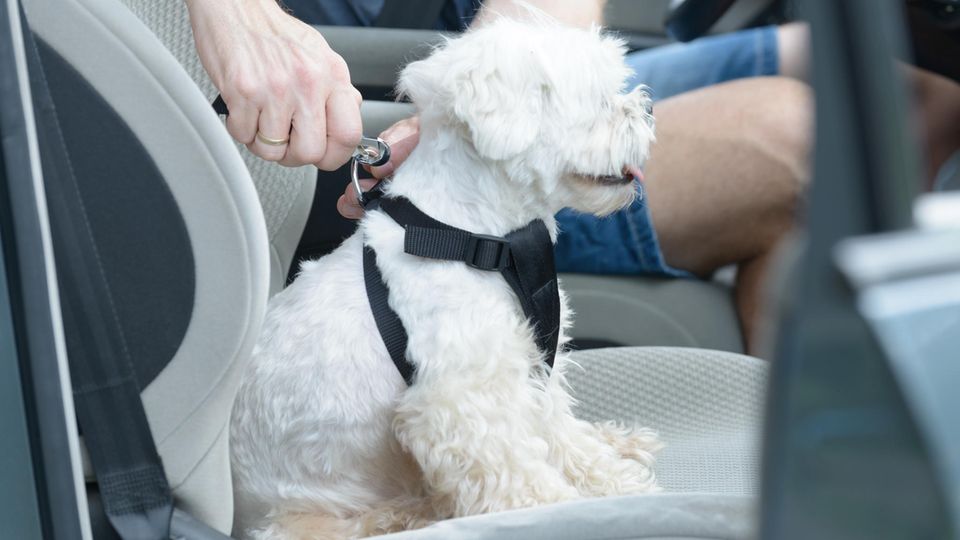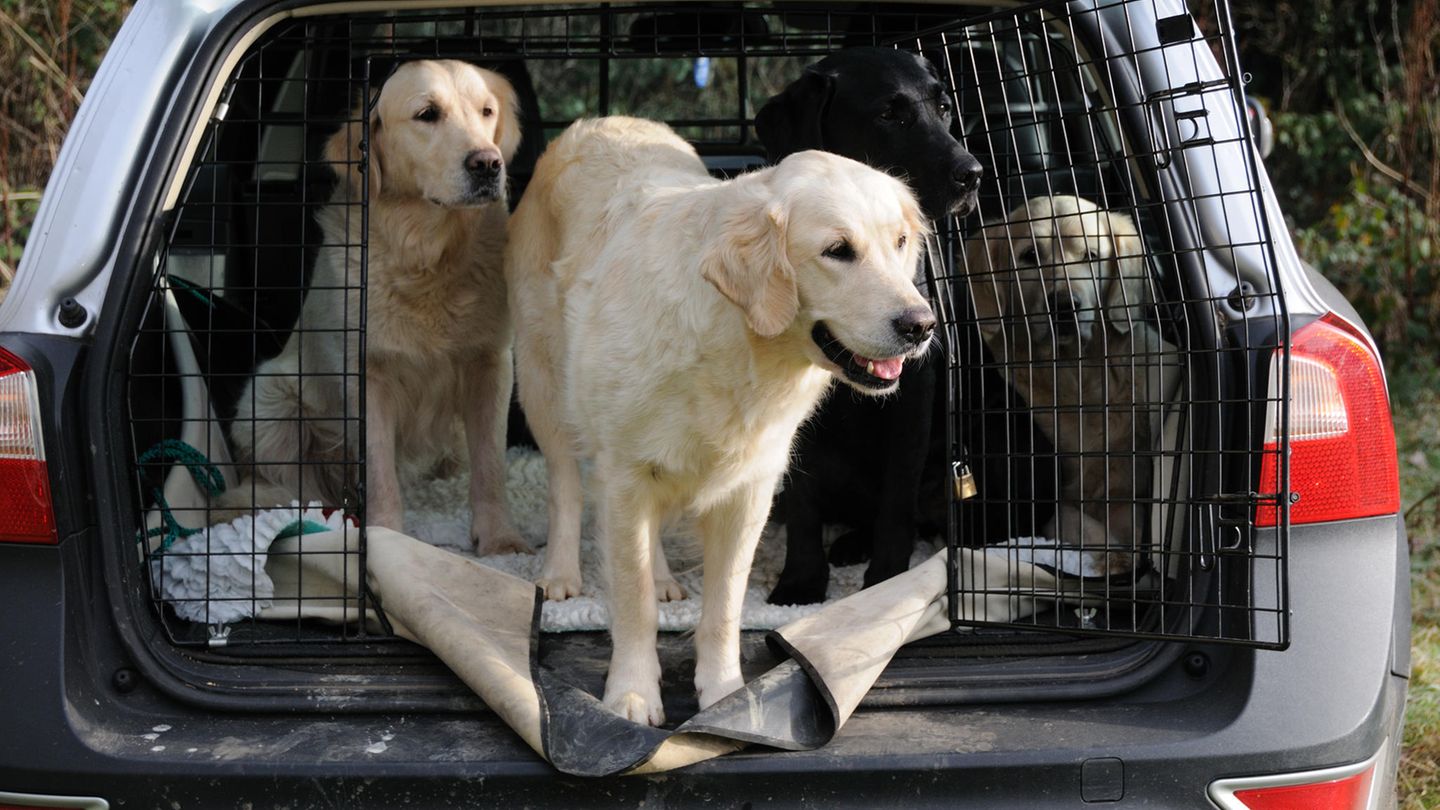Many dog owners let their four-legged friends ride unsecured in the car. This is not only life-threatening, but also punishable. We will show you safe transport options.
Vehicle owners often do not pay attention to the safety of people and animals, especially on short journeys: The dog is transported in the footwell, on the front passenger seat or on the back seat or even on the lap – without securing it. And this despite the fact that, according to the ADAC, a four-legged friend weighing 20 kilograms develops a penetration force of up to 600 kilograms in an impact at 50 kilometers per hour. The consequences for all occupants would be life-threatening in the event of an accident. For this reason, you should always transport your dogs in the car in such a way that everyone involved is protected.
Individual coverage: that’s what counts
Basically, the bigger the animal, the greater the effort. So in the first instance it depends on whether you want to transport a Labrador or a dachshund in the car – there are different ways to protect the animal. Sturdy metal transport boxes that can be safely stowed in the trunk are particularly suitable for large dogs. Medium-sized dogs can be secured using a harness and seat belt. For small dogs, on the other hand, there are also special transport boxes, which can also be safely placed on the back seat. You can find out how these methods differ in detail here:
Transportboxen
The advantage of a transport box is, on the one hand, that your dog is secured and, on the other hand, that the driver is not disturbed. According to the ADAC, they are particularly stable recommendable, which can be accommodated in the footwell (i.e. behind the front seat) – the traffic club came to the result after a crash test. There is no space there for larger dogs, which is why station wagons, hatchback sedans, vans and off-road vehicles tend to have cargo space for them on. In the event that the box is additionally secured, it is important always at right angles to the direction of travelstands and is pushed as far as the backrest of the rear seat bench: In the event of a rear-end collision, the forces that occur would be distributed laterally or evenly over the dog’s body.
Trenngitter
When you have your dog in the trunkwant to transport is a partition net or indispensable for the safety of humans and animals. Depending on how old your vehicle is, the rear seat backrests have different levels of stability – for this reason, partition grids that extend from the roof to the floor of the load compartment are the better choice for old cars. This is the only way to prevent the animal from knocking through in the event of an impact. A short one is usually enough for new vehicles with integrated headrest attachment.
Seat belt
For short distances you can bring your pet with a special buckle up. Make sure, however, that the belt is never attached to the collar – in the event of an impact, you would otherwise strangle the dog. In any case, use a dog harness that is as short and stable as possible and attached to the safety belt. That should also have wide straps and a firm fastener. It also needs to be snug against the body, but not too tight for it to cut into.
Car seat
Similar to children, there is also a car seat for small to medium-sized dogs, which is attached to the back seat and can also be used as a place to sleep. Your four-legged friend should always be secured with an additional seat belt, as otherwise it would be thrown out of the seat in the event of a collision. The advantage with one is mainly because the rear seats are protected from scratches, dog hair and dirt and your dog is supported by unforeseen driving maneuvers.
Protective blanket
In contrast to the car seat it is used solely to protect the rear seats of your vehicle and to protect them from soilingto protect. Buying here only makes sense if you secure your dog with an additional seat belt and harness while driving – otherwise it is not worth purchasing a protective cover for your four-legged friend.
Worth knowing: is it compulsory for dogs to wear seat belts?
So far there is no direct seat belt obligation for pets, but one Road traffic regulations. And this says – according to: “Anyone who drives a vehicle is responsible for ensuring that their vision and hearing are not impaired by the occupants, animals, cargo, equipment or the condition of the vehicle. Anyone who drives a vehicle must also ensure that the vehicle, the train, the combination, as well as the load and occupation, are in accordance with regulations and that the road safety of the vehicle is not impaired by the load or occupation. “
In plain language this means:From a purely legal point of view, dogs are considered to be cargo. Accordingly, you are obliged to secure your pet in such a way that the road safety of the vehicle and its occupants are not endangered. If you violate the paragraph, you face a warning and fine.
Dog Owner Fine: This is the penalty awaiting you
If you do not transport your dogs securely in the car, you will have to expect a fine of 35 euros. If you also endanger road traffic through your misconduct, the fine increases to 60 euros – in the case of property damage to 75 euros. And that’s not all: you also get a point in Flensburg. However, all of this is nothing compared to your life and that of the inmates, which is worth far more than a fine.
Dog on board: the best tips for long journeys

Long journeys are not only extremely exhausting for people – car journeys lasting several hours are also a torture for dogs. It is all the more crucial that you get your pet used to the transport variant and the safety precautions you have decided on before a trip. Your four-legged friend can then enjoy the ride in its “cave” in a much more relaxed manner. However, that is not all you should consider before a long journey by car.
Here are some important tips for dog owners:
- Make regular stops so that your dog has enough exercise and can empty his bladder or do his business or reduce stress.
- Offer your dog enough but don’t feed him while driving – nervous animals have a tendency to vomit while driving.
- Take familiar items like that or the cozy blanket so that your dog feels comfortable while driving.
- Since dogs do not sweat, the car should be adequately air-conditioned on hot days. However, the animal must not be subjected to any pull.
Those:
This article contains so-called affiliate links. There is more information here.
I am a 24-year-old writer and journalist who has been working in the news industry for the past two years. I write primarily about market news, so if you’re looking for insights into what’s going on in the stock market or economic indicators, you’ve come to the right place. I also dabble in writing articles on lifestyle trends and pop culture news.




